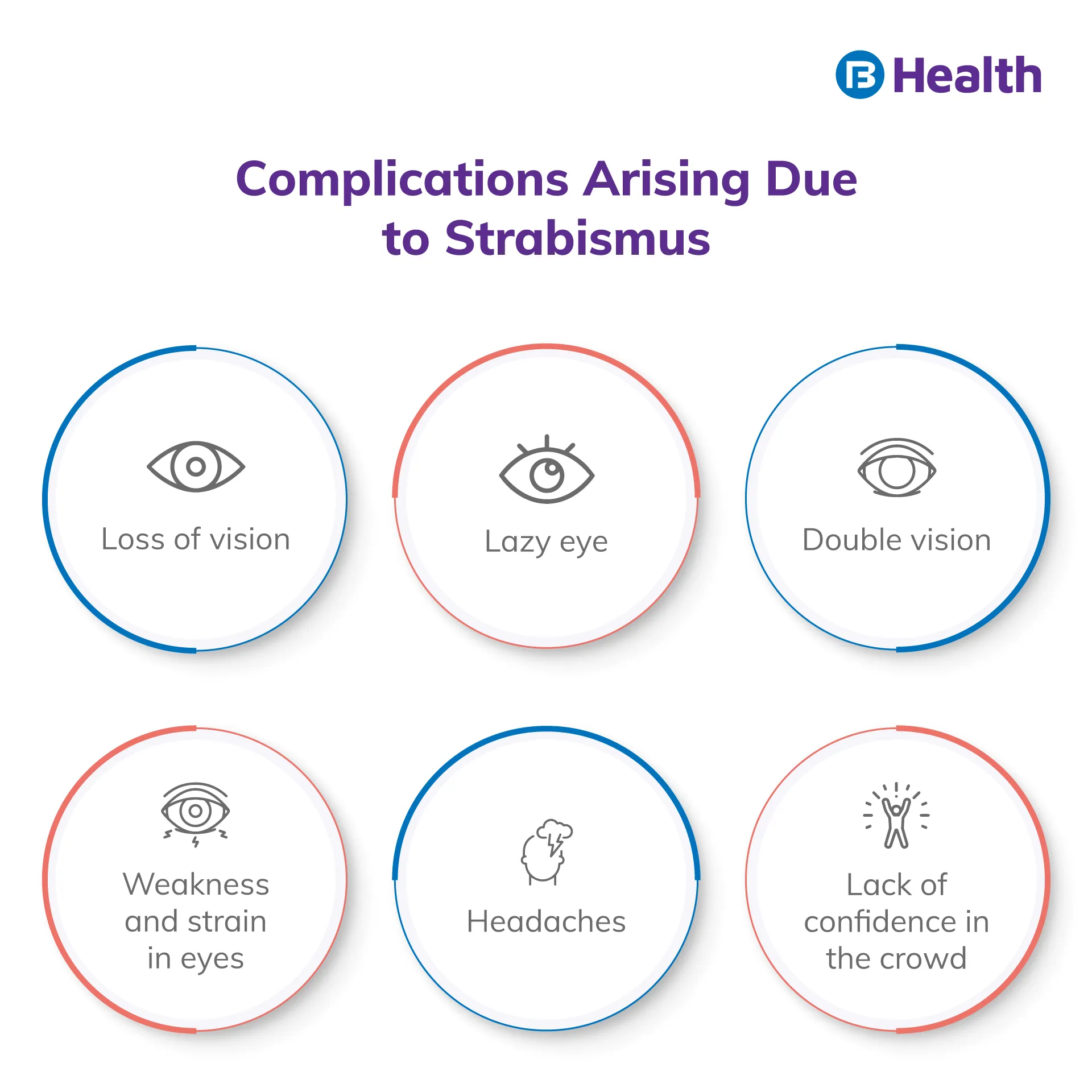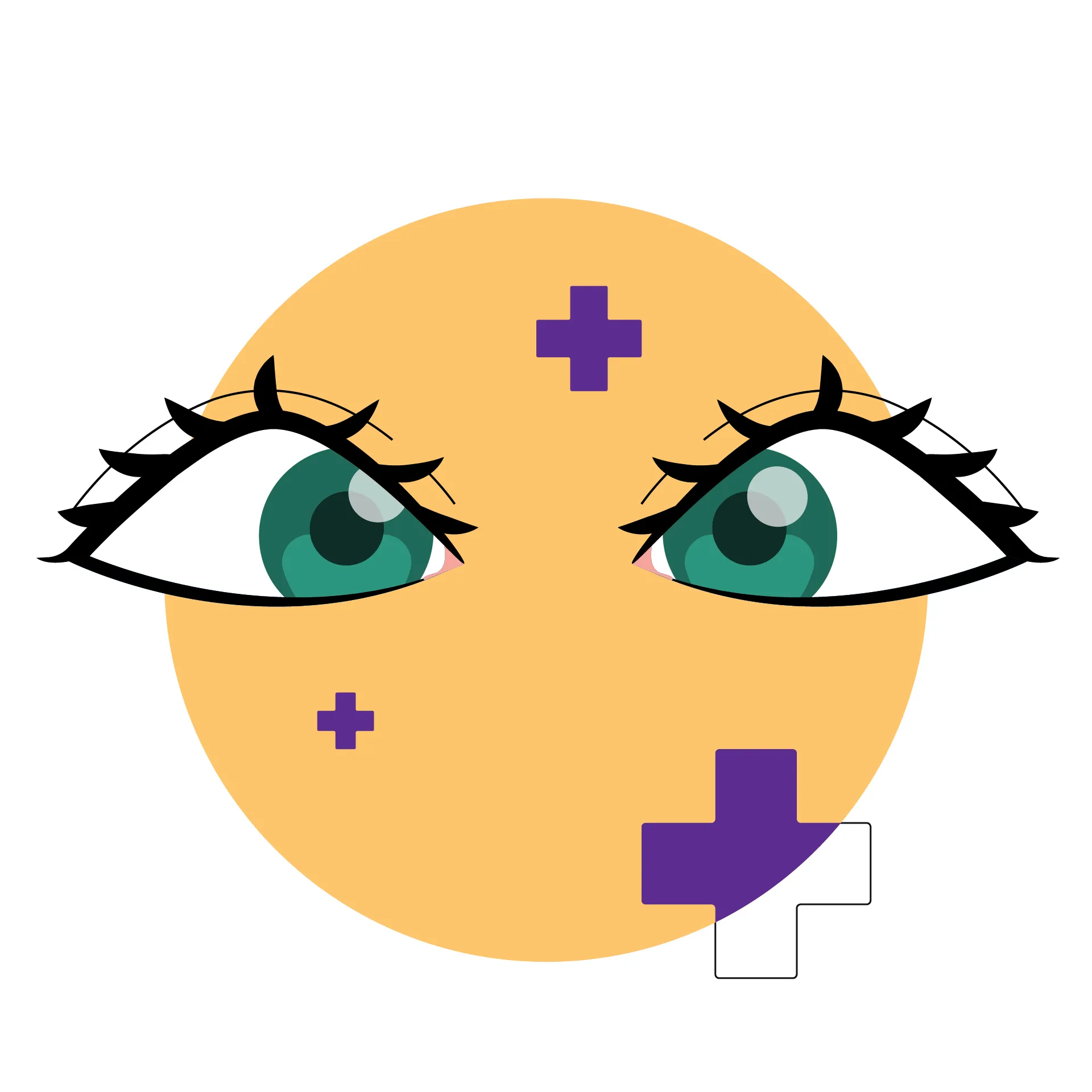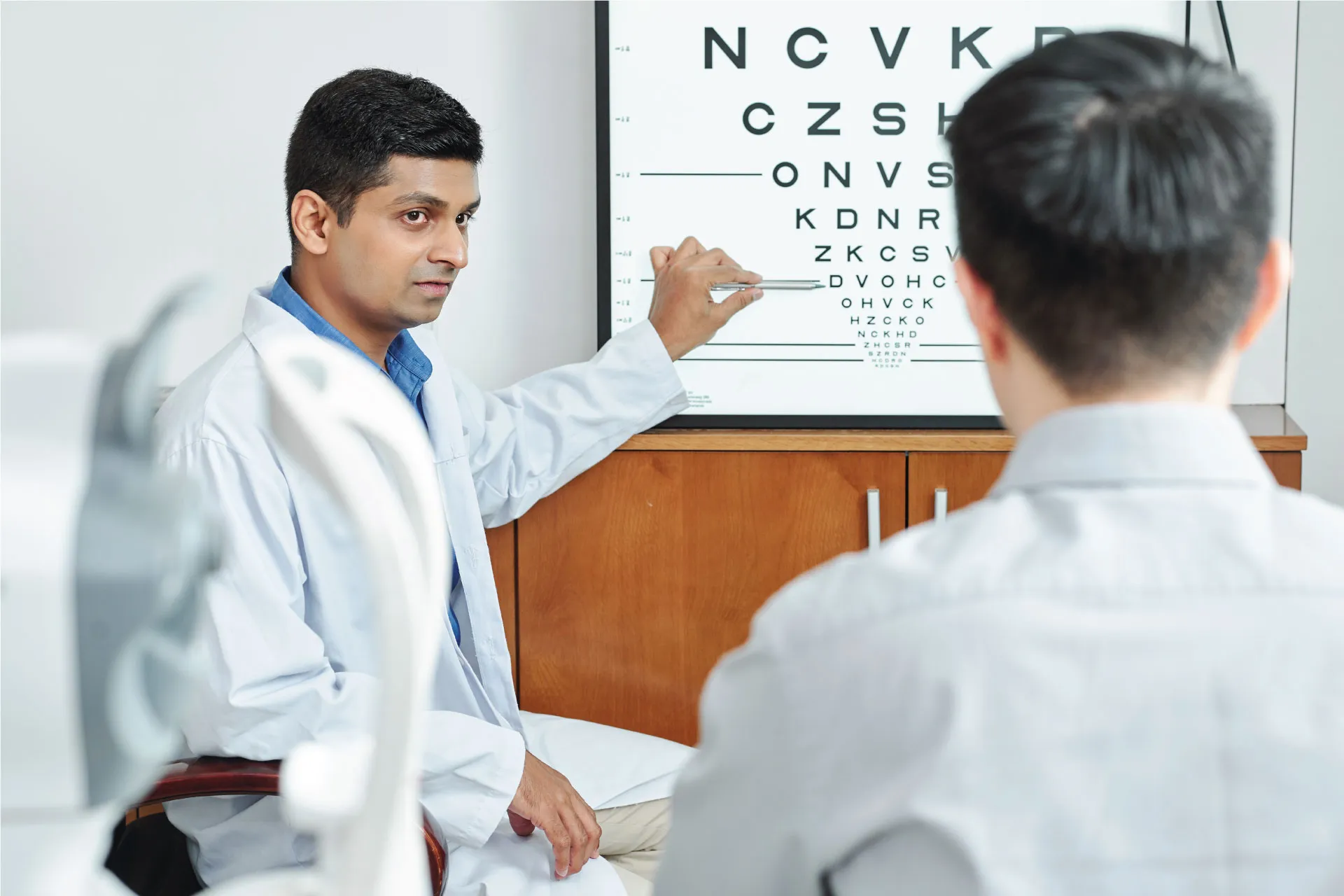Eye Health | 5 min read
Strabismus : Symptoms, Causes, Diagnosis, Complications
Medically reviewed by
Table of Content
Synopsis
Strabismus, commonly known as crossed eyes, is a condition in which your eyes are not aligned. The eyes cannot work together, and it is hard to focus in a particular direction. It may happen all the time or only when you are stressed.
Key Takeaways
- Strabismus is an eye condition in which both eyes don’t coordinate and work together
- Strabismus can occur at any age. However, this condition is primarily seen in children
- Untreated strabismus may result in vision loss. Hence early treatment increases the probability of recovery
What is Strabismus?
Strabismus is a condition in which both eyes don’t work together. As a result, one eye may focus in a different direction from the other. For a healthy person, the six muscles that control the eye moment work together and focus both eyes in a particular direction. In contrast, a cross-eyed person finds it hard to control eye movement and alignment. The eyes are sensitive organs. Hence, it is essential to take good care. A large population suffers from eye problems like Keratoconus and Anisocoria.
This condition is categorised into four depending on the direction of the eye moment.
- Inwards turning is referred to as esotropia
- Outward turning is exotropia
- Upward turning is hypertropia
- Downward turning as hypotropia
Causes of Strabismus
In most cases, the strabismus eye is caused due to nerve damage or the muscle around the eye failing to work properly. In the case of children, some are born with it. The doctors call this condition congenital strabismus. Although in 30% of cases, it is inherited. [1] In young children, crossed eyes may also lead to lazy eyes, medically known as amblyopia. Strabismus amblyopia is the condition of decreased eyesight due to an imbalance in the muscles that positions the eyes.
Other strabismus causes include:
- Tumours in the brain
- Poor vision in an eye
- Injuries in the head area that controls eye movement and eye muscle
- A disease called hydrocephalus in which fluid builds up within the brain
- Stroke in which blockage of blood supply causes brain damage
- Down syndrome, which is a genetic disorder
- Cerebral palsy is a collective disorder that affects movement, posture and muscle tone
- Graves disease is an immune disorder leading to the overproduction of thyroid hormone
Knowing the cause of the disease helps the doctor to treat it effectively. If the condition isn’t corrected at the right time, the weaker eyes’ ability to see might get affected.
Additional read: Eye Floaters Causes
Symptoms of Strabismus
These are a few symptoms that usually appear in strabismus:
- Eyes are unable to focus in a particular direction.
- Squinting in bright sunlight
- Headache
- Double vision
- Strain
Strabismus Treatment
At first, a doctor will try to understand the cause of strabismus based on its treatment plan. Here are a few treatment plans which doctors mostly recommend:
Patch
Your doctor will make you wear the patch on the stronger eye. This will force the muscles of the weak eye to work harder. The vision improvement also improves eye movement.
Medication
Doctors may suggest eye drops or ointments. In some cases, botox injections are used to control the eye muscle that causes eye turns. This treatment is preferred over surgery, depending on the person’s condition.
Eye exercise
It is a harmless way of treatment. Eye exercise is highly beneficial not only for strabismus patients but also for those who wish to have healthy eyesight.
Eyeglasses and contact lenses
These lenses help to treat refractive errors. Glasses and lenses can minimise the focusing effort. For some patients, prism lenses are also recommended. Eyeglasses are also a solution for those with nearsightedness.
Surgery
Surgery is an option if all the other treatments don’t work. The patients are given anaesthesia. The surgeons open the outer layer of the eye, remove a small section of muscle and reattach it at that location. This process strengthens the muscles and corrects misalignment. In some cases, adults are offered adjustable strabismus surgery to adjust the muscle position after surgery. The problem of double vision goes away within weeks after surgery.

Strabismus Diagnosis
The doctors conduct a series of tests to diagnose strabismus.
- At first, doctors will try to collect the patient’s medical history and family history
- Doctors may make you read letters from the eye chart
- They check the eyes with a series of lenses to measure how the eyes respond to light.
- The corneal light reflex (CLR) helps to detect strabismus
- The cover test helps to identify the type and magnitude of cross-eyedness
- Retina exam to check vision and eye health
If you have other strabismus symptoms, the doctor may also recommend a brain and nervous system test as a precaution. In the case of children, it is common to have strabismus in newborn babies. However, if the problem continues even after three months of age, meet the doctor immediately.
Additional read: Night Blindness SymptomsStrabismus Complications
If strabismus is not treated at the right time, it may lead to other health conditions.
- Loss of vision
- Lazy eye
- Double vision
- Headaches
- Weakness and strain in eyes
- Lack of confidence
Eyes are important to help us navigate the outside world. Unfortunately, conditions such as strabismus cause vision impairment and can affect our day-to-day life. If you encounter any discomfort in your eyes, meet the doctors without delay.
You can also visit Bajaj Finserv Health, where you can find expert advice via online doctor consultation at your comfort from any part of the world. Healthy eyes give you the confidence to reach bigger dreams.
References
- https://www.ncbi.nlm.nih.gov/pmc/articles/PMC4233980/
Disclaimer
Please note that this article is solely meant for informational purposes and Bajaj Finserv Health Limited (“BFHL”) does not shoulder any responsibility of the views/advice/information expressed/given by the writer/reviewer/originator. This article should not be considered as a substitute for any medical advice, diagnosis or treatment. Always consult with your trusted physician/qualified healthcare professional to evaluate your medical condition. The above article has been reviewed by a qualified doctor and BFHL is not responsible for any damages for any information or services provided by any third party.



